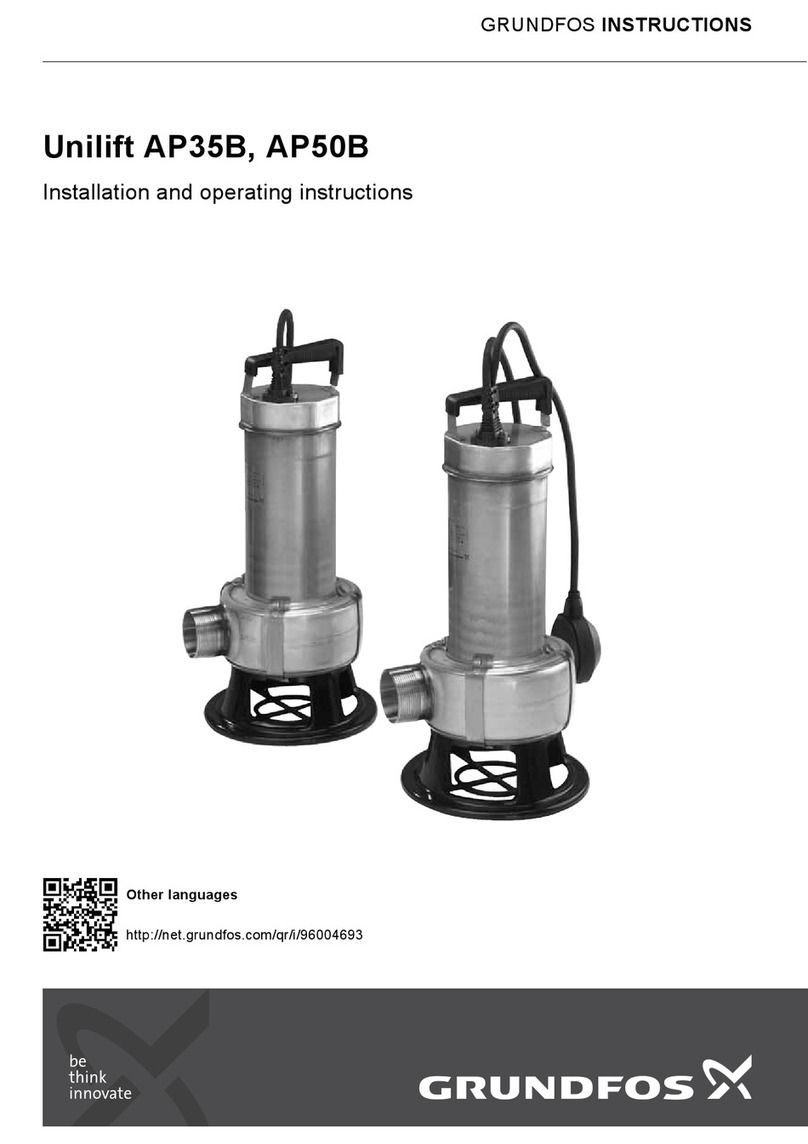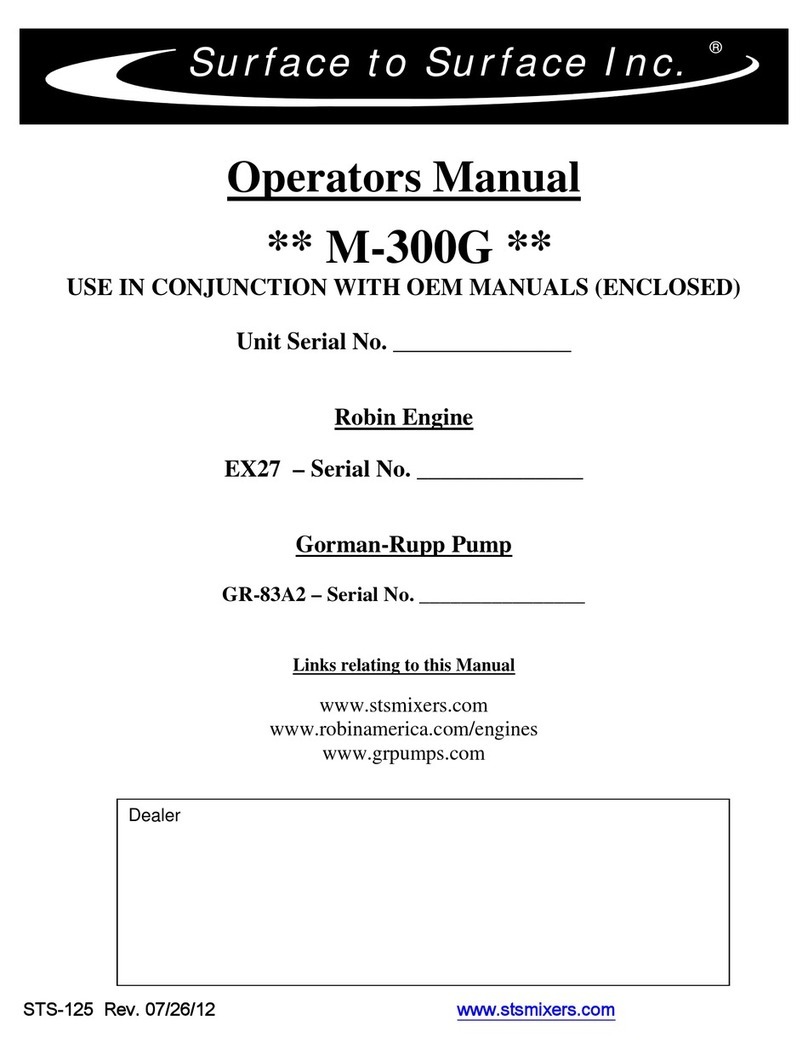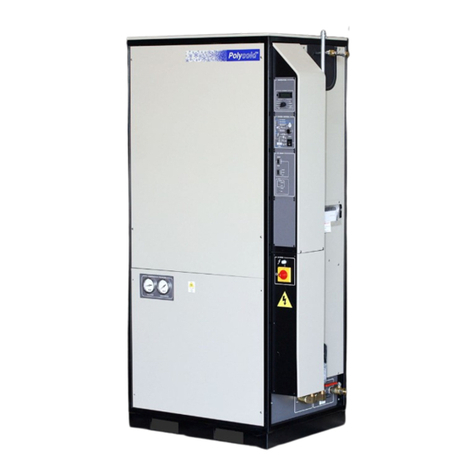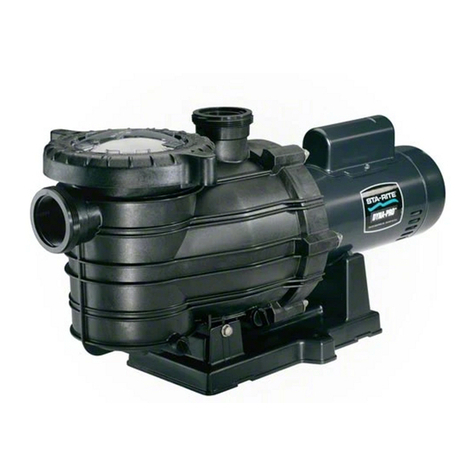Vulcan-Hart FT48 CI Installation guide

Table of Contents
Cover –Title Sheet
Instructor Resume
Coarse Objectives
Training Outline
Operation and Maintenance Training for Vulcan Industries “Mensch” Bar Screen
Section 1 - Safety
Section 2 –Operations
Section 3 –Electrical Sequence of Operation
Section 4 –Maintenance
All training will consist of both Classroom and hands-on training.
Twelve (12) sets of this outline will be provided for training purposes
No additional audio/visual training aids are required for this training.

Training Manual
Project: Beaver Channel Pump Station and Related
Modifications and Contract C- New WWTP
Project Location: Clinton, IA
Equipment:
2 - Mensch Crawler Screen
Model No. FT48 CI “Severe Duty”
Contract Specification Section: 11092
Equipment Tag Numbers: 10INF-CSCN02 & 10INF-CSCN01
Related Equipment:
1 –Screening Washing Press Model EWP 250-1200
(2) Shaftless Screw Conveyor Model TF-240
Contractor:
Gridor Construction, Inc.
4025 S. 30th St.
Clinton, IA 52732
Engineer:
HDR Engineering Inc.
1860 Boyson Road
Hiawatha, IA 52233
Manufacturer:
Vulcan Industries, Inc.
212 S. Kirlin St.
Missouri Valley, IA 51555
712-642-2755, FAX 712-642-4256
Manufacturer’s Representative:
Doonan Environmental
809 W. Spring St.
Eldridge, IA 52748
Vulcan Job No. 10100
Prepared by: Mark Hoffman
mark@vulcanindustries.com

VULCAN INDUSTRIES, INC.
Submittal Documents for: Clinton WWTP
Clinton, IA
Vulcan Ind. Job No.: 10010
Contractor: Gridor Construction
Specification Section References: 11092
SERVICETECHNICIANRESUMES
Vulcan Industries, Inc.
212 S. Kirlin St., Missouri Valley, IA. 51555
Email: www.Vulcanindustries.com
Phone 712.642.2755 • Fax 712.642.4256

2
VULCAN INDUSTRIES, INC.
WATER / WASTEWATER TREATMENT EQUIPMENT
212 S. KIRLIN ST. MISSOURI VALLEY, IA. 51555
(712) 642-2755 or fax (712) 642-4256
Email www.vulcanindustries.com
SERVICE REPRESENTATIVE QUALIFICATIONS
Carlton Griffin
Mr. Griffin has been employed full time by Vulcan Industries for fifteen years as a service
representative. He has been trained in the proper equipment start-up and operating
procedures as required by the field service employee manual as approved and signed by
the President of Vulcan Industries, as well as other Service Personnel.
Carl assisted other service representatives on several service and training operations before
becoming a full time serviceman. Prior to being employed by Vulcan, Carl worked as a
service technician in the food packing equipment industry.
He has performed start-up services and operator training on approximately 300 bar screens
and other wastewater plant equipment across the United States and abroad. Mr. Griffin has
a vast background in the operation and maintenance of plant equipment, as well as
electrical control and hydraulic equipment.
Mike Sharp
Mr. Sharp likewise has been employed full time by Vulcan Industries for approximately six
years as a service representative. He too, has been trained in the proper equipment start-
up and operating procedures as required by the field service employee manual as approved
and signed by the President of Vulcan Industries, as well as other Service Personnel.
Mike also assisted other service representatives on several service and training operations
before becoming a full time serviceman. Prior to being employed by Vulcan, Mike was a
service technician and manager for several companies involved in the manufacturing field.
Mike has an extensive mechanical background as well as vast experience in electrical
control, pneumatics, hydraulics and customer service.
While not performing field services, the technicians assist in the manufacturing of equipment
and electrical controls related to the Wastewater Treatment Industry.
Mike has performed start-up services and operator training on approximately 150 stair
screens, washing presses and related equipment, and is particularly specialized in the start-
up and optimization of rotary drum thickeners.
Kenny Athay
Mr. Athay has been employed full time by Vulcan Industries for approximately three years as
a service representative. He was trained in the proper equipment start-up and operating
procedures by the other Service Personnel.

3
Kenny assisted other service representatives on several service and training operations
before becoming a full time serviceman. Prior to being employed by Vulcan, Kenny worked
for many years as a technician in the HVAC and electrical industry. He has extensive
knowledge in the areas of electrical, electronics, mechanical and pneumatic equipment.
While not performing start-up services, Kenny assists in the manufacturing of equipment
and electrical controls related to the Wastewater Treatment Industry.
He has performed start-up services and operator training on approximately 100 wastewater
screens, presses and related plant equipment across the United States.
Jay Kirk
Mr. Kirk has been employed full time by Vulcan Industries for approximately sixteen years,
with 8 serving in the capacity of service technician. He is currently employed in our
electrical controls design department. He too, has been trained in the proper equipment
start-up and operating procedures as required by the field service employee manual as
approved and signed by the President of Vulcan Industries, as well as other Service
Personnel.
Jay assists other service representatives in troubleshooting, adjustments and optimizing the
operation of equipment . Prior to being employed by Vulcan, Jay was a service shop
foreman for a major agriculture distributor. Jay has an extensive mechanical background
and while working with John Deere, Jay received specialized, extensive training in electrical
control, pneumatics, hydraulics and customer service.
Jay has performed start-up services and operator training on approximately 140 bar screens
and other wastewater plant equipment across the United States and abroad.
Mr. Kirk has a vast background in the operation, maintenance and electrical control of the
supplied equipment

Coarse Objectives
Mechanical Bar Screen
Identify, describe and/or perform the following:
1. Safety Hazards
2. Functional Description of Equipment
3. Technical Description and Component Identification
4. Equipment Operation
5. Troubleshooting
6. Maintenance and Lubrication
7. Maintenance Demonstration
The intent of this training is to provide all plant personnel (Operations, Maintenance and
Electrical) with the general knowledge to operate and maintain the equipment. Personnel will
understand the functional and technical operation of the equipment, be able to troubleshoot,
maintain and repair the equipment and adhere to recommended safety procedures. Following is
a basic outline of the content of this training session:
Operation and Maintenance Training Outline
1. Safety
a. Biohazard warning
b. Electrical Hazards
Mechanical Hazards
2. Operations
a. Functional description
b. Owners responsibilities
c. Operational sequence of equipment
d. Operational procedures of equipment
3. Electrical Sequence of Operation
a. Normal start-up sequence
b. Electrical sequence of operation

c. Electrical equipment device functions
4. Maintenance
a. Lubrication schedule
b. Daily maintenance schedule
c. Weekly maintenance schedule
d. Monthly maintenance schedule
e. Half-yearly maintenance schedule
f. Maintenance and repair of individual components

Section 1
General Safety
Instructions
1General Safety Instructions
1.1 Operator’s Responsibilities
This machine was designed and built to operate within all applicable safety guidelines.
In practice, however, this safety can only be achieved if all the necessary measures are
taken. It is the responsibility of the owner and/or operator to ensure that these measures are
taken and to monitor their performance.
The operator must ensure that:
The machine is used only as directed in this manual.
The machine is in good working condition and the safety devices are checked regularly
for their operability.
The required personal safety gear for operating, maintenance and repair is available and
is used.
The operating instructions are available in legible condition and in complete form.
Only adequately qualified and authorized personnel operate, maintain and repair the
machine.
All the safety and warning signs attached to the machine are in place and remain legible.
All doors, panels, covers, and guards are closed or secured in place.
1.2 Safety Measures
A. Keep Information Available
Keep these operating instructions in an easily accessible location. Ensure that everyone
working on the machine can access the operating instructions at all times.
Keep all safety signs and instruction plates on the machine in legible condition. Immediately
replace signs that have become damaged or unreadable.
B. Biohazardous materials
When operating the machine, especially when performing maintenance and upkeep, it is
imperative that you comply with applicable instructions and guidelines on safety, occupational
medicine and hygiene. The medium processed by the machine falls under the category of;
“Biologically Hazardous Material”!

Section 1
General Safety
Instructions
C. Before Turning the Machine on
Familiarize yourself with:
The operating and control elements of the machine.
Machine equipment.
The mode of operation of the machine.
The immediate surroundings of the machine.
The safety devices on the machine.
Emergency measures.
Before the machine is turned on, perform the following:
Check and ensure that all safety devices are attached and functioning.
Check the machine for visible damage. Immediately rectify defects or report them to
supervising personnel. Operate the machine only when it is in good working condition.
Ensure that only authorized personnel remain the in the area of the machine and no one
might be injured when the machine is activated.
Caution: Automatic Equipment! When the machine is
activated, it can run in automatic mode. It can start automatically
at any time.
D. During Normal Operation
Do not remove or deactivate any safety device while the machine is running.
Do not operate the machine with guards, doors, panels or covers removed.
E. During Maintenance
Perform the maintenance work prescribed in the operating instructions –adjustment,
cleaning, lubrication, upkeep and inspection –within the suggested maintenance schedule.
Take note of special requirements for individual components in these operating instructions.
Before performing maintenance work:
Disconnect the power supply. Follow all Lock-Out Tag-Out procedures in place for the
worksite. Note that control panels may have more than one source of power.
Ensure that all parts of the drive have cooled down to room temperature.
Ensure that appropriate hoisting gear and load suspension devices are available when
large machine parts have to be replaced.
Bar access to the work area of the machine and ensure that no unauthorized people
remain in it.
Replace machine parts that are not in good working condition
Use only genuine replacement parts from the manufacturer.
Ensure that suitable collection containers are available for all substances that are
hazardous to groundwater (oils, coolants, etc.).
After maintenance work is completed and before switching on the machine:
Check that all bolted joints previously loosened are securely fastened.
Check whether all safeguards and covers previously removed are properly installed.

Section 1
General Safety
Instructions
Ensure that all tools, materials and other equipment used have been removed from the
work area.
Clean the work area and remove liquids that might have spilled.
Ensure that all safety devices of the machine are functioning properly.
F. Working on Electrical Equipment
Only trained electricians should perform work on electrical equipment of the machine.
Regularly check electrical equipment:
Reattach loose connections.
Immediately replace damaged wires or cables.
Always keep the control panel and all electrical supply units closed. Access is allowed only
by authorized personnel.
Never clean electrical equipment with water or similar liquids.
G. Environmental Protection
When performing work on the machine follow the protocol for waste prevention and proper
recycling or waste disposal.
Ensure that hazardous substances such as grease, oils, coolants, solvent-containing
cleaning fluids, etc. are collected and disposed of in a safe manor and as prescribed by
environmental laws.
H. Equipment Modifications
For safety reasons, do not perform any unauthorized modifications to the machine. This also
applies to welding work on load-bearing parts.
Vulcan Industries, Inc. must approve all modifications in writing.
Use only genuine replacement parts from the manufacturer. Parts manufactured from a third-
party do not conform to the manufacturers design standards.
The use of third-party parts and special equipment on the machine could result in
catastrophic failures and void the warranty.
1.3 Requirements for Operating Personnel
Warning: All operating and maintenance personnel
must read and understand these operating instructions before
operating and/or performing maintenance to this machine.
A. Operating Personnel
Only personnel who are trained, instructed and authorized to operate the machine may do so.

Section 1
General Safety
Instructions
These personnel must be familiar with the operating instructions.
In addition, the following qualifications are needed for the following activities:
Only electricians may perform work on electrical equipment.
Only trained personnel may perform maintenance, upkeep and repair work.
1.4 Other Dangers
A. Risk of Injury
Do not impede the operating sequence of the machine. Injury from the moving components
can occur. Lock-out the machine before performing any kind of inspection or maintenance
activities.
Warning: Do not reach into automatic equipment
without first shutting down the machine! The machinery can
start at any time.
B. Build-up of Hazardous Gasses
Because of the nature of the treatment process, hazardous gasses may form and lead to a
deadly atmosphere.
Always take appropriate precautions when operating and/or maintaining equipment in a
classified area.
Warning: There is risk of explosion or detonation.

Section 1
General Safety
Instructions
1.5 Safety Symbols
The following are pictures and an explanation of all the safety stickers that are used on
Vulcan equipment. Some of these may or may not pertain to your particular machine.
A spreader bar must be used when
lifting this machine.
Contractor, make sure that the seal off
fitting is potted before you close out
the job.
Be careful of moving parts when
working on the machine. Use proper
Lock-out procedures.
This part of the machine is not meant
to be used as a step. Injury to persons
or damage to machinery can result.

Section 1
General Safety
Instructions
Grease point for maintenance
reference.
Grease point for maintenance
reference.
Watch for an open pit.
Equipment in Automatic mode may
start if sensors are triggered. Make
sure the machine is properly locked-
out

Section 1
General Safety
Instructions
Do not operate the machine with
covers removed.
Take care in not getting caught in the
exposed screw or other moving parts.

Section 2
Operation
Equipment Type:
Mensch Bar Screen
Function:
The Bar Screen is designed to remove solid debris from the influent channel flow.
This is accomplished by placing a trash rack in the sewer channel. Debris
accumulates on the bars of the rack. A traveling rake assembly cleans the
accumulated debris. The rake assembly can be controlled manually or
automatically. The amount and size of the debris being removed is determined by
the open space between the trash rack bars.
Maintenance and Warranty: Owners Responsibilities
Routine maintenance is defined in daily, weekly, and monthly intervals. Routine
maintenance tasks must be performed, as defined, to keep the warranty valid. Repairs
which require long-term shutdown or rake removal are considered Warranty repairs.
Contact Vulcan Industries to determine if a repair is covered under the Warranty.
Following are examples of routine maintenance.
• LUBRICATION
• WEEKLY, MONTHLY, SEMI-ANNUAL, ANNUAL MAINTENANCE including:
Rake Inspection
Pin Rack Inspection
Rake Adjustment (if required)
Wiper Adjustment (if required)
Brake Inspection
Fuse replacement
Simple trouble shooting
Minor electrical repairs (example; Replacement of limit or proximity
switches)

Section 2
Operation

Section 2
Operation
OPERATING PROCEDURE
Start-Up (Initial start-up or after long term shutdown)
Prior to initial start-up and following long periods of maintenance shutdown, the
following must be checked and verified.
a) Visual inspection of all moving parts to insure that all tools, rags and other
loose items have been removed.
b) Perform all lubrication tasks as described under “Section 3 Lubrication”
Prior to energizing the rake, all electrical and related
mechanical work must be completed. Check that all
mechanical and electrical lockouts have been cleared.
c) Verify that all electrical safeties operate properly.
d) Close circuit breaker at the electrical control panel to energize system.
e) Using the local "Hand-Off-Auto" control switch, place unit in "Hand". Use the
"Forward-Off-Reverse" switch to "jog" the drive motor to verify rotation. If
rotating improperly, reverse two motor leads. If operating properly, test the
reverse mode. NOTE: The reverse switch is always spring loaded to prevent
unattended operation.
f) If system operates freely, then place mode controller in "Forward" position and
allow the rake to travel to the bottom of the screen.
g) Stop the rake near the bottom of travel and begin jogging the rake around the
bottom of the pin rack. Insure that the rake teeth do not contact the screen base
plate. Teeth should clear the base plate by 3/8 to 1/2 inch.
If the rake teeth drag the base plate, the rake will require adjustment.
REFER TO RAKE ADJUSTMENT DRAWING, SECTION 5.
h) Once the rake clears the screen base plate, continue to jog forward until the
rake teeth engage the bar rack. The rake teeth should enter the bar rack
without binding or shifting position. Removable rake tooth sections are slotted
for adjustment. If necessary, loosen the teeth attachment bolts and center the
teeth on the bar rack spaces.
CAUTION

Section 2
Operation
i) Operate the rake upward through the bars and deadplate stopping prior to
reaching the wiper. Jog the rake forward until the rake shelf contacts the wiper
blade. Make necessary wiper adjustments as needed to ensure the wiper does
not jam on the rake shelf.
REFER TO WIPER ADJUSTMENT DRAWINGS, SECTION 5.
j) Once the rake and wiper have been properly aligned, place the rake in the
forward direction and visually observe operation through three (3) complete
cycles. The rake should travel freely, with no signs of binding or jamming.
k) Mode of operation may now be set at desired position (manual/auto).
Normal Operation
A. Starting
1. Insure power is available to control panel.
2. Verify power to drive unit.
3. Make certain that there are no other personnel working on this unit.
4. Establish sewage flow.
5. Place mode controller into desired position.
B. Stopping
1. Shut down sewage flow.
2. Place mode controller to "OFF" position.
IF SEWAGE IS NOT STOPPED, THE SCREEN MAY BECOME
PLUGGED, AND REQUIRE MANUAL CLEANING PRIOR TO
RESTART.
Operating Characteristics:
1. Hand and Automatic Operation:
a) Hand operation should be used for maintenance only. The rake can be
operated in forward or reverse by setting the mode controller to “Hand”, then
selecting either “Fwd” or “Rev” at the local control panel.
b) Automatic operation is used as the primary control. The “start” signal will be
from: a repeat cycle timer, differential level input and/or a remote start
signals. The rake can be operated in Automatic by setting the mode
controller to “Auto”, then selecting “Fwd” at the local control panel. The rake
will not start in Automatic unless the “Fwd” position is selected. The “Rev”
position is “spring return to off”, to prevent the rake from starting an
automatic cycle in reverse.

Section 2
Operation
Protective Devices:
1. High Torque Protection:
A Current Sensing Relay is used to monitor single-phase line amps. When the
motor is overloaded, the CSR senses the amp draw and de-energizes the
motor starter, stopping the motor. The CSR is calibrated in the field at start-up
and should be tested periodically.
2. Over Rotate Protection:
A proximity or limit switch mounted on the rake trips when the maximum
collapsibility of the rake has been reached, and prevents the rake from possible
damage caused by overly large objects. The device is calibrated at the factory.
3. Solid State Motor Overload Device:
The motor starter utilizes solid-state circuitry that can be fully reset.
4. Motor and Brake Thermals:
The motor and brake both have heat sensing thermals imbedded in the
windings. The motor and brake thermals are wired in series. When any of the
thermals overheat the motor starter is de-energized, stopping the equipment.
5. Fuses and Breakers:
Used to provide short circuit protection
6. Emergency Stop Push Buttons
E-stop push buttons are located on the local control panel and/ or the main control
panel. Pushing the button in will shut down the equipment, whether in hand or auto
mode. To reset the e-stop, the button must be manually pulled out.
END OF SECTION

Section 3
Electrical
Functions
Bar Screen Sequence
1. After the Mensch Screen has been properly installed/adjusted, motor rotation
checked and all control panel devices (timer(s), overload(s), current sensing relay,
etc.) have been set, automatic operation may proceed. Go to the local control station
and make sure the Emergency Stop button is pulled out, the Hand-Off-Auto selector
switch is in the "Auto" position, and all personnel are clear of the equipment.
2. Then go to the main control panel and open the door. Then turn on the circuit
breaker for the drive motor. Close the door and place the main disconnect in the
“On” position. Then turn the control power selector switch to the "On" position. The
white control power indicator light should be on at this time.
3. The Mensch Screen will be started by the software based frequency/duration timers
in the PLC or by the ultrasonic differential level detector (ULD). When the frequency
timer times out the duration timer will be initiated. The duration timer will then
energize the screen run relay (CR12) via software logic in the PLC. The CR12
contact in line 6 will close and the motor starter coil, run indicator and run relay
(CR2) will be energized. If the set point in the duration timer is set for a short time
period, the Mensch Screen will make one cycle and park at the end travel limit
switch (LS-1). The ultrasonic differential level detector (ULD), in line 19, may also
start the Mensch Screen. When the ULD detects the preset/adjustable differential
level set point the ULD-1 contact in line 40 will close giving an input to the PLC. The
software logic will then energize the screen run relay (CR12). The CR12 contact in
line 6 will close and the motor starter coil, run indicator and run relay (CR2) will be
energized. The Mensch Screen will continue to run as long as a differential level
condition is present. If a high upstream level condition is detected above the ULD-2
set point, the ULD-2 contact in line 41 will close and CR12 will be energized starting
the Mensch Screen. The Mensch Screen will continue to run until the high upstream
level drops. This high level condition will also cause the conveyor and washing press
to run continuously until the condition is no longer present. The end travel limit
switch in line 39 forms a holding circuit within the PLC to allow the Screen to
consistently park at this switch when a run signal is no longer present.
4. The Mensch Screen is protected from overtorque by the current sensing relay
(CSR1) in line 13. Should the Mensch Screen encounter an obstacle the drive motor
current will increase. Once this increase equals the preset of CSR1, the CSR1
contact in line 12 will close turning on CR4 and the Screen Overtorque pilot light.
The normally closed CR4 contact in line 4 will open stopping the drive. The normally
open CR4 contact in line 44 will close giving an input to the PLC. Turn the Hand-Off-
Auto selector switch to the "Off" position. Then press the Screen Reset push button
to reset. The jam must be cleared and the controls again set for automatic operation.
Table of contents
Popular Water Pump manuals by other brands

Aqua Systems
Aqua Systems Electric KFC Series instruction manual

GORMAN-RUPP
GORMAN-RUPP 03H3-GR Installation, operation and maintenance manual

Griswold
Griswold 811 Installation, operation and maintenance manual
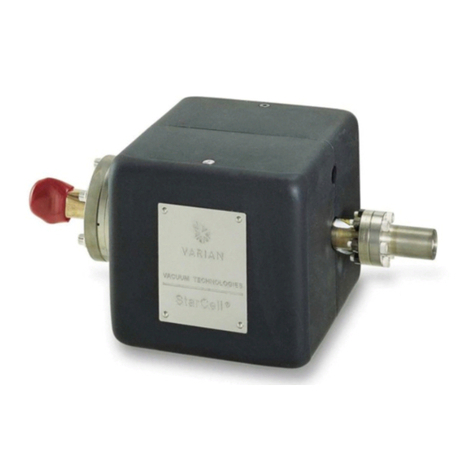
Varian
Varian 919-1115 instruction manual

Faicom
Faicom GP7241 quick start guide
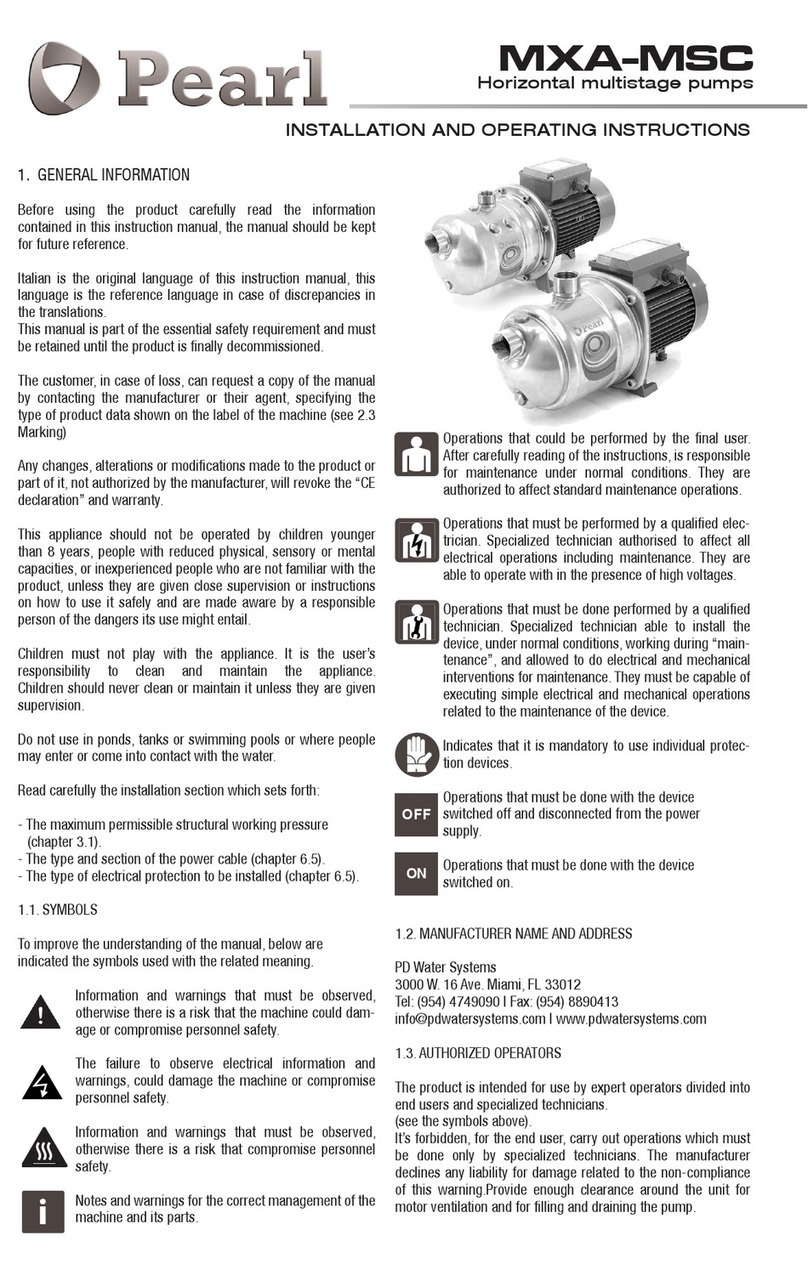
Pearl
Pearl MXA Series Installation and operating instructions

coolado
coolado ePump user manual
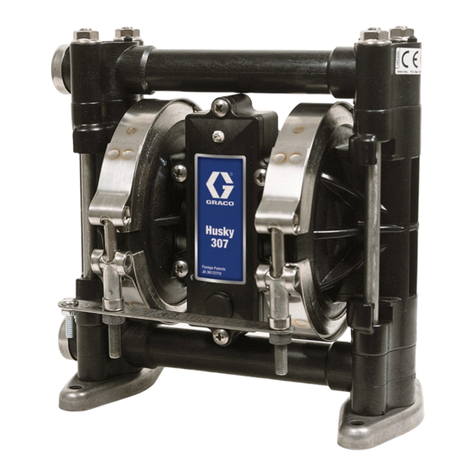
Graco
Graco Husky 307 F Series Instructions-parts list

Liberty Pumps
Liberty Pumps FL152M-3E owner's manual

ProMinent
ProMinent Meta MTKa operating instructions
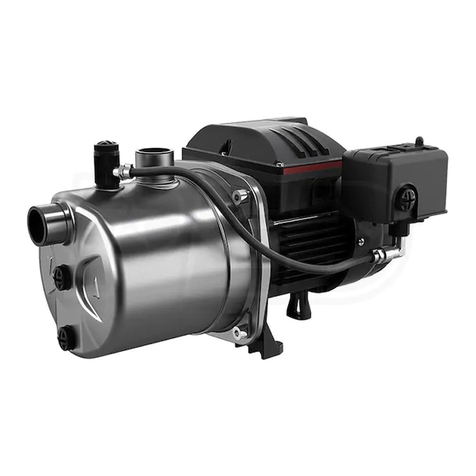
Grundfos
Grundfos JP05S Installation and operating instructions

Speck pumpen
Speck pumpen Zismatic 40/10 WE Operation manual
